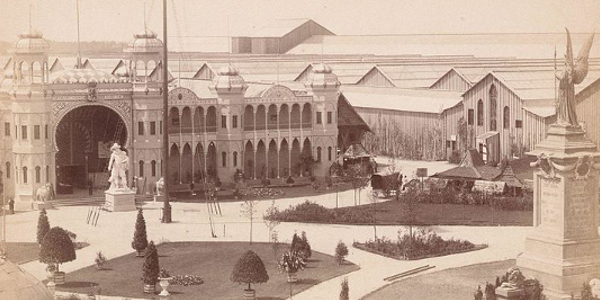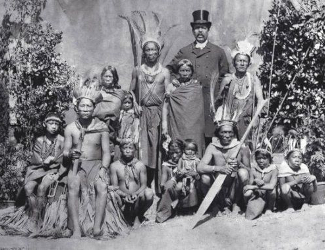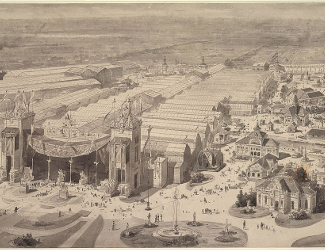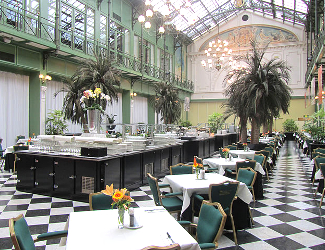Quick List Info

Dates Open
May 1 to October 31, 1883. Open Sundays.
Attendance
1.439 million attendance. Some contemporary sources list up to 3 million visitors.
International Participants
28 nations and colonies quoted. List includes 39 nations and/or colonies.
Note: All of the above are estimates from various sources. See below for details. Additional participants are possible.
Total Cost - Unknown.
Site Acreage - 62 acres (donated for expo use by the city) in what is today the Museumplein square, site of the current Rijksmuseum, Van Gogh Museum, Stedelijk Museum, and Concertgebouw concert hall.
Sanction and Type - Prior to the Bureau of International
Exhibitions. The exhibition would be considered a Special Expo event on specific themes like that on the 2-3 or 7-8 years of a decade cycle. King William III endorsed the plan for the exhibition, but the government did not fund.
Ticket Cost - 50 cents (1 france).
Photo top center: Photo of the Dutch Colonial Pavilion, plus statue of Jan Pieterszoon Coen, Colonial Governor-General of the Dutch East Indies, 1883. Courtesy Stadssarchief via Wikipedia Commons. Column Top: Official Diploma from the International Colonial and Export Exposition, 1883, Expo Authority. Courtesy Pinterest. Column Bottom: Map of the exhibition, 1883, Unknown original source.

Other Histories of World's Fairs to Check Out











